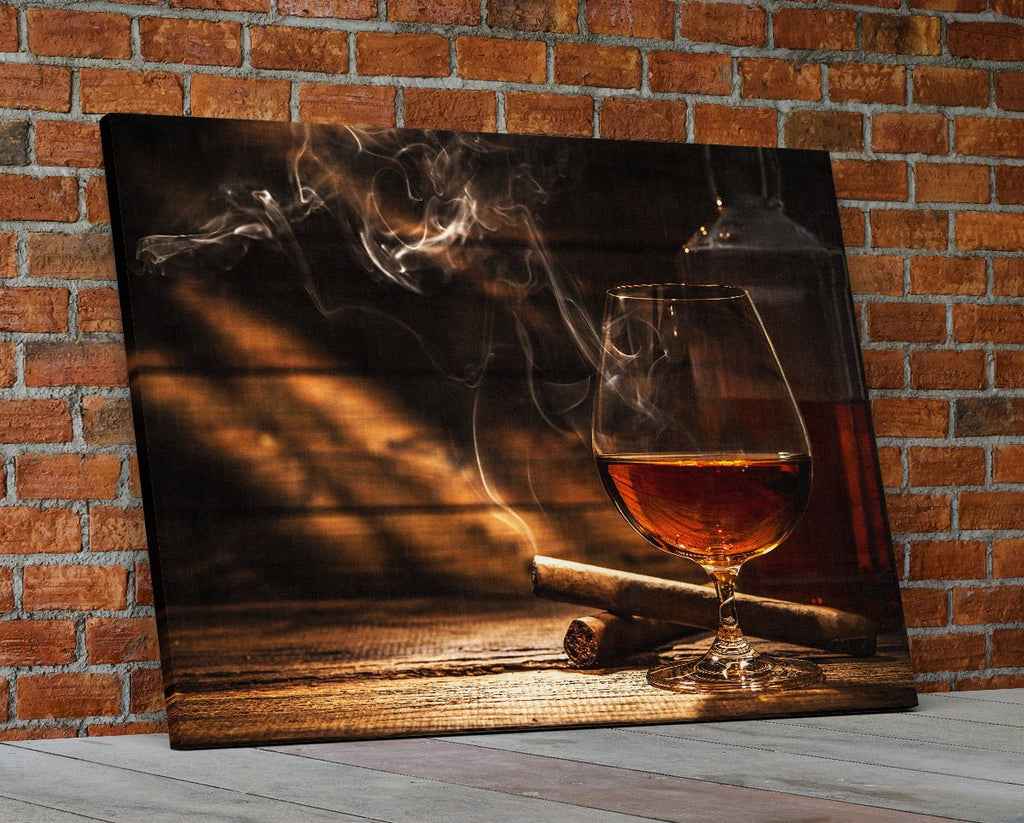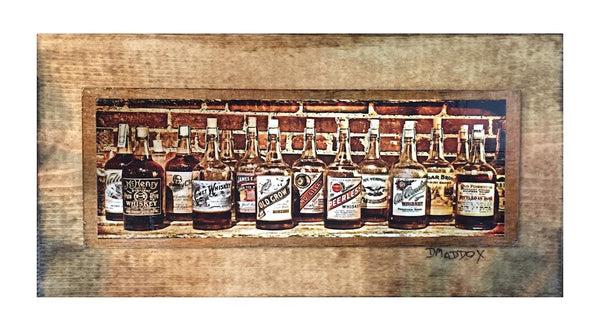Limited Edition Bourbon Art: Why Collectors Are Gathering to One-of-a-kind Finds
Limited Edition Bourbon Art: Why Collectors Are Gathering to One-of-a-kind Finds
Blog Article
The Importance of Whiskey Art in Celebrating Heritage and Workmanship in the Beverage Industry
The elaborate partnership in between scotch art and the party of heritage and craftsmanship within the drink industry can not be overemphasized. Via thoughtfully created containers and tags, whiskey brands envelop their historical origins and the artisanal abilities that define their manufacturing methods.
The Historical Origins of Whiskey
At the heart of whiskey's allure exists a rich tapestry of historic roots that map back to old people. The origins of scotch can be connected to the purification techniques of the Sumerians and Babylonians around 2000 BCE, where very early types of fermented grain beverages began to arise. It was in the Middle Ages that the art of distillation developed significantly, specifically in Ireland and Scotland, leading to the creation of scotch as we recognize it today.
The term "whiskey" itself acquires from the Gaelic word "uisce beatha," indicating "water of life." This phrase highlights the social relevance of bourbon in Celtic cultures, where it was commonly related to routines, parties, and common bonding. By the 15th century, purification ended up being an acknowledged craft within monastic areas, leading the way for the establishment of lawful distilleries.
As profession courses broadened, scotch's appeal expanded, going beyond regional borders and catching the interest of lovers worldwide. Bourbon Art. This historic journey mirrors not just the workmanship behind scotch production but additionally its integral duty in social and cultural contexts, marking it as a considerable drink throughout background
Artistic Expression in Branding
Whiskey branding stands as a compelling junction of artistry and commerce, where aesthetic identity plays a crucial function fit consumer understanding. The aesthetics of bourbon labels, packaging, and advertising materials reflect not only the brand name's tale but likewise its core values and heritage. Via creative expression, distilleries convey a narrative that resonates with customers, evoking feelings and stimulating connections.
The use of color, typography, and images in branding offers to differentiate products in a saturated market. For instance, traditional themes might stimulate a feeling of credibility and workmanship, while modern-day layouts can indicate innovation and forward-thinking. This calculated creative instructions improves brand name acknowledgment and loyalty, permitting consumers to build an individual connection with the whiskey they pick.
In addition, creative expression in branding frequently acts as an event of local heritage. Distilleries regularly include neighborhood icons or historical recommendations right into their layouts, developing a sense of place that welcomes customers to take part in a wider cultural experience. Inevitably, the artistry behind whiskey branding not only boosts visual charm yet likewise enhances the total story of the brand, promoting a much deeper admiration for the craftsmanship and heritage ingrained in each bottle.
Workmanship in Bottle Layout
The artistry obvious in bourbon branding extends beyond aesthetic identity to encompass the workmanship associated with container design. Each bottle functions as a vessel not simply for the spirit within, but additionally for the tale it outlines its tradition, high quality, and beginning. The style procedure requires careful attention to information, as elements such as product, closure, and shape contribute considerably to the total perception of the whiskey.
Craftsmanship in container layout includes selecting premium glass that can boost the bourbon's shade and quality, while likewise supplying a tactile experience for the consumer. The shape of the container should be both visually appealing and functional, often reflecting the heritage of the brand. Many distilleries opt for distinct forms or embossed logo designs that stimulate a sense of authenticity and background.
Moreover, the label style and typography play an important function in interacting the brand's narrative. Realism Art. A well-crafted container not just blog astounds the customer's eye yet likewise enhances the brand's commitment to top quality and custom. In this way, the craftsmanship of container layout ends up being an important facet of the bourbon experience, merging artistry with a profound respect for heritage
Cultural Importance of Bourbon Art
Commemorating custom and workmanship, the cultural importance of whiskey art goes beyond mere looks, intertwining with the social and historical stories of the areas where it stems. Each bottle functions as a canvas, showing the special stories, mythology, and practices that have formed neighborhood whiskey-making practices. The elaborate styles often reflect the heritage of the distillers, including signs and concepts that resonate with the culture and worths of their neighborhoods.

In addition, scotch art plays a vital duty in communal events and celebrations, working as a concrete web link between individuals and their shared experiences. By valuing the creativity in whiskey product packaging, consumers grow a deeper understanding and respect for the craft, eventually improving their satisfaction of the drink itself.
Modern Trends in Scotch Discussion
In recent years, the discussion of scotch has progressed to mirror contemporary preferences and trends while still honoring typical craftsmanship - Realism Art. Distilleries are increasingly focusing on aesthetic components that boost the total drinking experience, connecting the space in between heritage and modernity
Innovative container designs have actually emerged, commonly incorporating sustainable materials and artistic tags that tell engaging tales. Lots of brand names now work together with neighborhood musicians, instilling their items with special aesthetic expressions that reverberate with consumers. Additionally, limited-edition releases are commonly packaged in collectible containers, adding value and allure for lovers.

Conclusion
Finally, bourbon art functions as a crucial avenue for expressing the heritage and craftsmanship inherent in the drink sector. Through elaborate branding, cutting-edge container layouts, and culturally significant creative components, scotch brand names effectively recognize click this their customs and attach with customers. This imaginative story not just elevates the gratitude of whiskey you can find out more however likewise strengthens neighborhood identity and pride among producers. Eventually, bourbon art plays a vital function in preserving and celebrating the abundant social tapestry of whiskey-making.


Craftsmanship in bottle style entails picking high-grade glass that can improve the bourbon's color and clarity, while likewise supplying a tactile experience for the customer. In this means, the workmanship of container design ends up being an essential element of the scotch experience, combining virtuosity with an extensive respect for heritage.
In verdict, scotch art offers as a crucial conduit for sharing the heritage and workmanship fundamental in the drink market.
Report this page